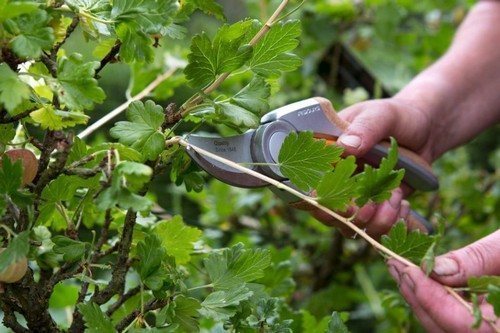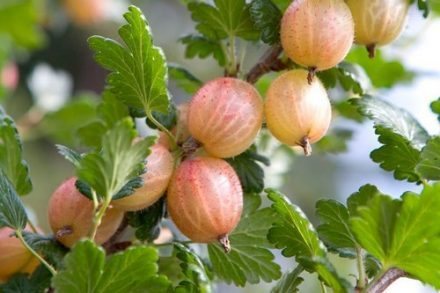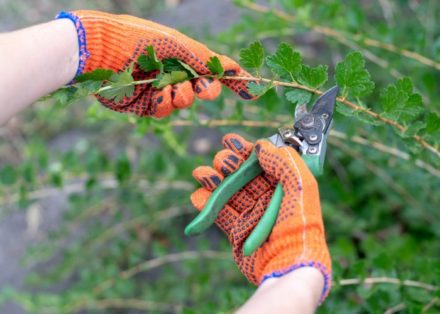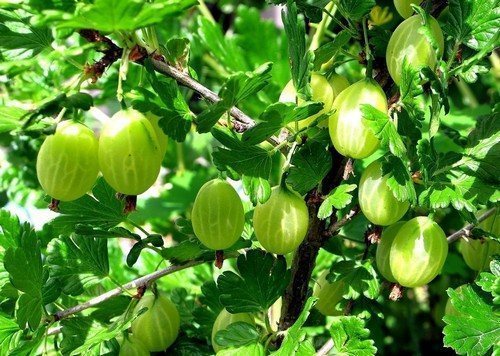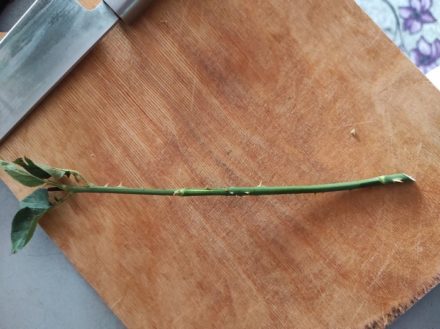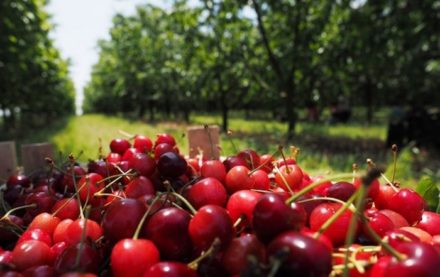After picking the gooseberries, the work in the garden does not end. It is necessary to put the bushes and the ground around them in order. If you skip this stage, you may not see the next harvest. Just a few tips will help you enjoy berries all next year.
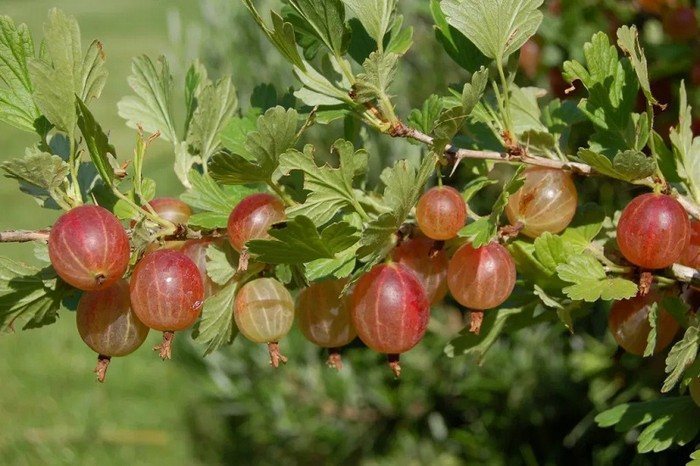
Work on the site after fruiting
Throughout the autumn period, the foundation of a new harvest is laid.
Results depend on the following activities:
- bringing order to the site;
- watering fruit-bearing bushes;
- feeding gooseberries;
- sanitary pruning;
- Preventive sanitation against diseases and pests.
Although the crop is unpretentious and undemanding to care, experienced gardeners advise taking full responsibility for restoring the energy wasted by the plant.
Cleaning and digging the area, weeding, mulching
They begin work by clearing the ground under the bushes. They weed, collect fallen leaves and rotten berries, and rake up mulch. Garbage is burned to prevent infections.
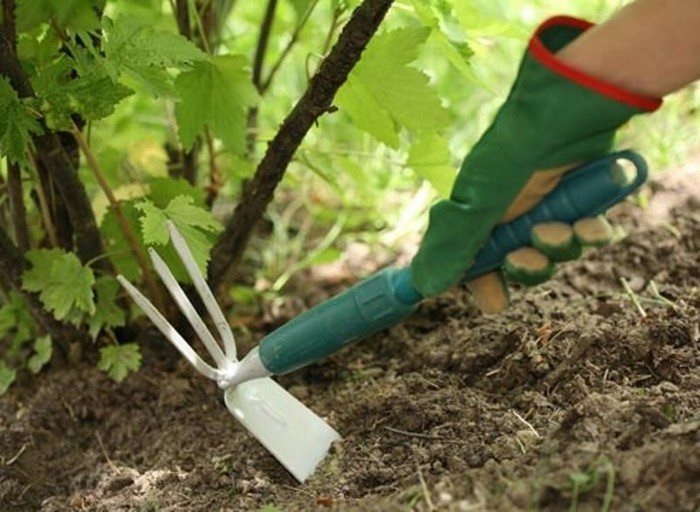
Then we weed the root zone. Green weeds are pulled out by the roots and scattered under the bushes. It will serve as additional fertilizer.
Finally, to enrich the soil with oxygen, the soil is carefully dug to a depth of 6–7 cm. The top is mulched with straw, sawdust or mowed grass.
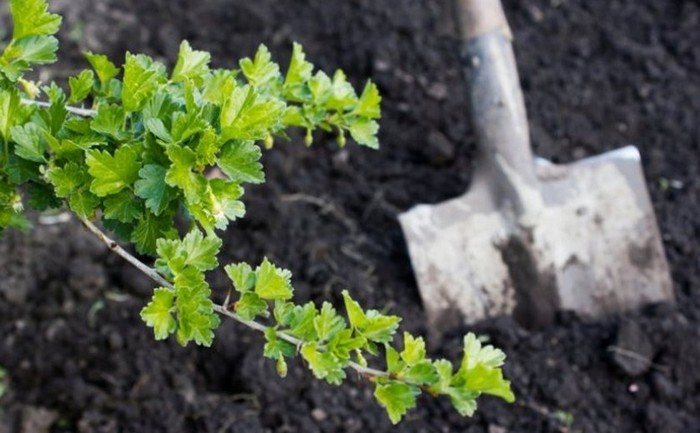
Watering fruit-bearing bushes
Usually, after fruiting, gooseberries are not watered to prevent the appearance of young shoots that will not be able to survive the winter. But in dry weather the bushes are irrigated. Every 7–10 days, 15–20 liters of water are applied under the bush.
In the interval from the end of September to mid-October, water intensively (3–5 times per period), using 4–5 buckets per procedure, taking into account rains. The depth of moisture is 0.5 m. Such irrigation will allow the root system to survive the winter well, and in the spring the plant will need the remaining supply of liquid.
Feeding fruit bushes
After fruiting, the bush is fed generously. This will give the plant new youth, allow it to survive the winter and enjoy the harvest again. Nitrogen fertilizers are reduced to a minimum, or even abandoned altogether. And potassium and phosphorus have won recognition.
Mineral fertilizers per 1 sq. m:
- Potassium monophosphate - 50–80 g.
- Potassium salt or sulfate - 25–30 g.
The granular material is scattered under the bushes and the soil is loosened so that the fertilizer sinks to a depth of 8–10 cm.
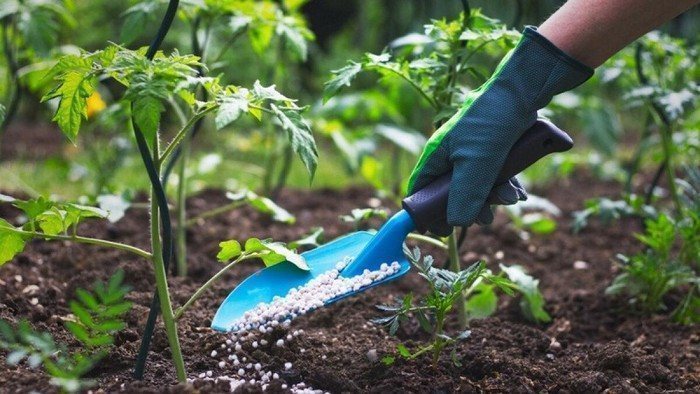
Organic fertilizers:
- Ash - 100–200 g per 1 sq. m.
- Peat or humus - a bucket for 1 bush.
- An aqueous solution of mullein (1:1), fermented for several days - 10 liters per bush.
Additionally, foliar feeding is carried out. They use a growth stimulator, which is useful for bushes that have produced a bountiful harvest and at the same time have lost a lot of energy reserves for bearing fruit.
Sanitary pruning
Pruning is carried out from October 15 until the first frost, when the bush is completely free of foliage. Carrying out the procedure earlier may lead to the death of emerging young shoots when cold weather sets in.
Injured and dried out branches that grow incorrectly and choke the crown are removed. As well as shoots located close to the ground or creeping along it. Get rid of immature shoots and branches older than 5 years of age. The branches are completely removed. The cut areas are lubricated with a mixture called garden varnish.
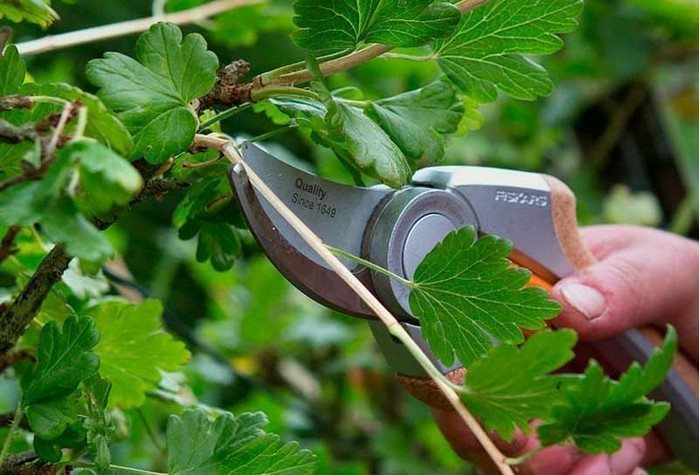
Prevention of diseases and harmful insects
After pruning, measures are taken to prevent diseases and pests.
Preparations against bush diseases:
- 1% Bordeaux mixture;
- 3% iron sulfate;
- 1% copper sulfate;
- other fungicides.
Insecticides Karbofos, Fitoverm, Actellik will help protect shrubs from insects.
The drugs are used as prescribed. Not only gooseberry branches are sprayed, but also the soil under the bushes and supporting structures are watered.
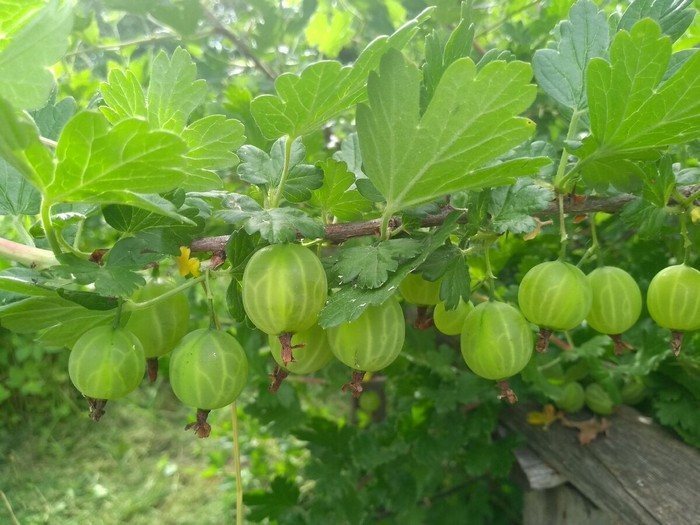
If gardeners follow the advice on caring for gooseberries after fruiting, the bushes will successfully survive winter frosts. And next year they will receive gratitude for your attention and care with even richer and higher-quality fruiting of healthy berries.


